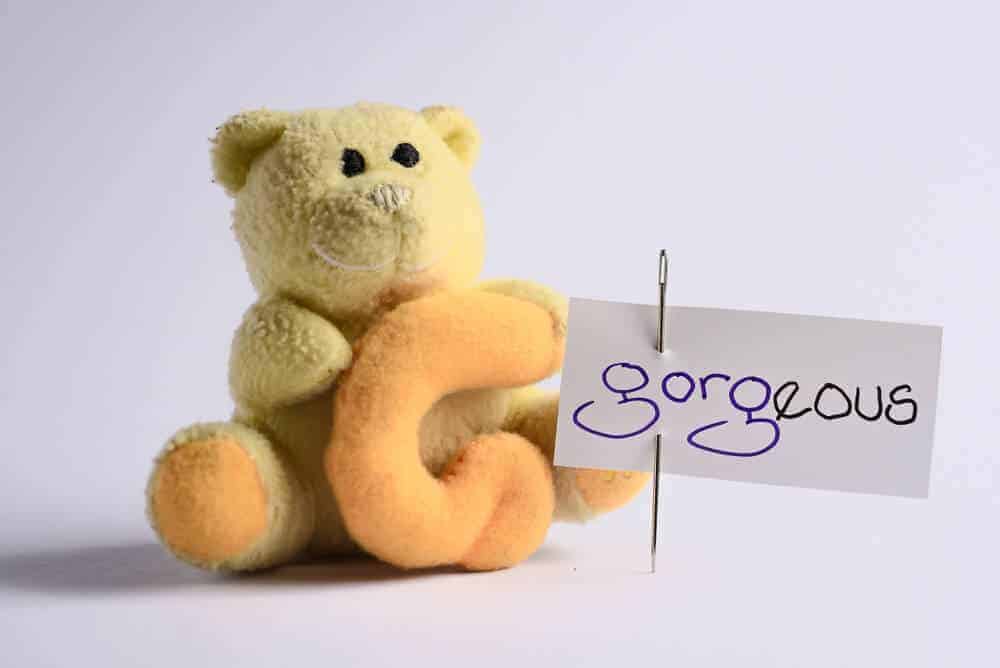
Adjectives are modifiers or words used to describe a noun. Aside from their descriptive purposes, adjectives make sentences more meaningful. They flesh out sentences and paint a picture of what one’s trying to say.
Without them, the world would be boring without them. Learn more about these useful words and how to use them for better communication.
Related: Types of Speech | Types of Adverbs | Types of Metaphors | Types of Diction | Types of Nouns | Types of Verbs | Types of Pronouns | Types of Conjunctions | Types of Prepositions
Types
Adjective of Quality

If the adjective is used to describe the nature of a noun or subject, and it can answer the question “what kind of?”, this is a perfect example of an adjective of quality. Also known as qualitative adjectives, adjectives of quality show the quality or kind of noun or pronoun it is, and they are adjectives that describe qualities such as:
- Age
- Colors
- Feelings
- Material
- Opinions
- Origin
- Qualities
- Shapes
- Sizes
- Time
- Tone
- Touch
An adjective of quality describes a person, place, idea, or thing and gives a strong feeling or image for that subject or item. It is used to identify either the features or qualities of a person, place, or thing. Qualitative adjectives are normally gradable; in other words, they have forms that are either superlative (the form that indicates the most or least of something, usually by adding letters such as “est”), positive (the basic, uncompared form), and comparative (identified by either adding the letters “er” or words such as “less” or “more”). If you tell someone your brother was the strongest or tallest boy in his class, this is an example of a qualitative adjective.
Appearance Adjective

Appearance adjectives describe the way something or someone looks. They can describe a person, place, or thing, and like adjectives of quality, they can answer the question, what kind of? If a word describes someone as attractive, being bald, being flabby, or something that looks ordinary, these are perfect examples of appearance adjectives. Any person or item can have their looks described by using this type of adjective, so as you can imagine, they are used quite often in today’s world.
Common Adjectives
Simply put, common adjectives are regular adjectives used every day by millions of people, and they are used to describe a noun, i.e., a person, place or thing. There are different types of common adjectives, and they include words such as blue, young, hairy, funny, and large. They can be broken down into many different categories, but as a general rule, when you find an adjective in a sentence, it is known as a common adjective. Adjectives are different than adverbs, which, although they also describe nouns, always answer one of five questions: who, where, what, when, and how. Unlike proper adjectives, however, common adjectives do not start with capital letters.
Compound Adjective

Compound adjectives are also called phrasal adjectives or compound modifiers, and they are created when two or more words work together to modify the same noun. Compound adjectives always appear before the noun that they modify, and they are often joined by one or more hyphens to make it clear that the words are working together to modify a single unit. If you see two or more words that describe a person, place, or thing, and those words have one or more hyphens in them, it is very likely a compound adjective.
Condition Adjective
Condition adjectives essentially tell you whether something is in a bad or good state, and they often describe a temporary condition of the person or thing used in the sentence. They usually describe a physical condition or an emotion, as well as general states, and can include words such as wet, clean, angry, powerful, or clever. If it describes the condition of a person, place, or thing, it is likely an adjective of a condition.
Demonstrative Adjective
If you want to think of a simple explanation for demonstrative adjectives, think of them as words that point at something or refer to something. This is their main function – to point at something – so these types of adjectives include words such as “this,” “that,” “those,” and “these.” If you picture a person pointing at a person or an object or referring to those things in some way, then imagine what adjectives they are using, they are more than likely using adjectives that demonstrate something. Demonstrative adjectives are also used to distinguish people or items from other people or items, and this is done by making it clear who you’re talking about or referring to.
Distributive Adjective

Describing a word that likely comes from the late Latin word for “divided up,” a distributive adjective describes the doling out or dispensing of things. If you claim that a teacher becomes a distributive source of facial tissue for students during the cold season, this is a good way to understand distributive adjectives. They are typically used with singular nouns and include words such as either, neither, every, and each, among others.
Occasionally, the distributive adjective must be added to in order for the true meaning to be demonstrated. For example, when you use the word “each” and the following noun is plural, you often have to use the phrase “each of the,” instead of just the word “each.” In addition, more often than not, the words “each” and “every” can be used interchangeably when you’re using distributive adjectives.
Indefinite Adjective

Much as the name implies, an indefinite adjective describes a person, place, or thing, but in a nonspecific way. Words such as “few” and “several” are examples of indefinite adjectives because they do not refer to a specific number or amount of people or things. Indefinite adjectives are not the same things as indefinite pronouns, and they are always used to describe a noun by showing an amount of uncertainty. In other words, the writer or speaker is intentionally avoiding including a specific number or amount of something in the sentence, which is why words such as “few” are always used. If the adjective uses a vague or nonspecific term to describe a person, place, or thing, it is an indefinite adjective.
Interrogative Adjective

An interrogative adjective is a bit different from other types of adjectives in that it does two things: it both indicates a question and modifies a noun. Words such as “what” and “which” are perfect examples of interrogative adjectives, and they can serve as adjectives or just pronouns, depending on whether they can stand on their own or modify a noun. If the sentence that contains the interrogative adjective ends with a question mark and the adjective is a word such as “which,” “what,” or “whose,” this is an example of this type of adjective.
When determining whether something is an interrogative adjective, make sure it satisfies both of the above requirements; otherwise, it isn’t an interrogative adjective, but could very well be an interrogative pronoun – for example, in the question “which is the greater?” the word “which” is an interrogative pronoun, not an interrogative adjective, because it doesn’t modify a noun but instead, takes the place of a noun.
Past Participle Adjective

A past participle ends in the letters “ed,” and when the word is used to modify or describe a noun, it is called a past participle adjective. Past participle adjectives are adjectives with passive meanings, in part because most past participles naturally have passing meanings when used as either adverbs or adjectives. If you say, “my family was entertained,” the word “entertained” is the past participle adjective, and if you use a word that ends in “ing,” (e.g., “entertaining” instead of “entertained”), it usually represents a present participle adjective. If it modifies a person, place, or thing and ends in “ed,” it is most likely a past participle adjective.
Personality Adjective

Personality adjectives answer the question, “what is this person like?” and are used to describe a person or that person’s character or personality. Everyone has different personalities and therefore, personality adjectives number in the hundreds. If you say someone is nice, lazy, upbeat, polite, or sensitive, this is an example of a personality adjective. Adjectives such as tall, thin, or fat are not personality adjectives because they describe someone’s appearance, not that person’s personality. A personality makes up a person’s character and consists of numerous characteristics or qualities, and this is what makes up the personality adjective.
Possessive Adjective

Like its name implies, a possessive adjective describes the person, place, or thing that comes after it by showing ownership of it. If you say, “she got her looks from her father,” the word “her” is an example of a possessive adjective, and in the sentence, “take her book and put it on your table,” the words “her” and “your” are considered possessive adjectives. If it describes any type of noun and indicates ownership, it is a possessive adjective, making it an adjective that is very simple to recognize. They are different than possessive pronouns, which include words such as “mine,” “ours,” “yours,” and “theirs.”
Present Participle Adjective
Similar in some ways to a past participle adjective, the present participle adjective always ends in “ing” and modifies a person, place, or thing by describing the situation in the present. Although past participle adjectives can have endings besides “ed,” present participle adjectives always end in “ing,” which means the rule regarding present participle adjectives is the same all the time – something that is rare in the English language. Past participles have the ability to take different forms, but this is not the case for present participles, as they always end in “ing.”
Telling someone that “actor XYZ has been playing law enforcement professionals for decades” is a perfect example of a present participle adjective, which in this sentence is the word “playing.” Present participles can be used in front of a noun (e.g., intriguing mystery), after a perception verb (e.g., the woman was screaming), or even to introduce a participle phrase (e.g., sweeping the clusters of hair up, the beautician was finally done with her work). If it describes a noun and ends in “ing,” it is very likely a present participle adjective.
Proper Adjective

A proper adjective always starts with a capital letter because it always describes a proper noun, which also includes a capital letter as the first letter. If you say you bought an Italian sub sandwich, the word “Italian” signals a proper adjective. If you keep in mind that proper adjectives, like proper nouns, always start with a capital letter and always describe a person, place, or thing, it will be very simple to identify them when you see them in a sentence. Proper adjectives describe something explicitly, directly, and efficiently. Instead of saying, “I love food that comes from Italy,” it is simply easier to say, “I love Italian food.” Proper adjectives such as Christian, Shakespearean, Chinese, and Iraqi make for shorter sentences and enable you to read or speak the sentence with no awkwardness.
Proper adjectives are formed by adding an ending to the noun that it is derived from, and although there is no one rule that applies to every proper adjective, some of the most common endings include -istic, -like, -ian, and -an, to name a few. Proper adjectives can also be used to describe nouns that are not proper; for instance, a New York bagel, London etiquette, and a South American blanket. Proper adjectives are derived from various cities, countries, and regions, and the more you study them, the more familiar they become.
Quantitative Adjective

Also called adjectives of quantity, quantitative adjectives describe a type of measure or count of any living beings or non-living things, and it can include either specific or vague terms. For example, if you say “there is enough water in the lake,” the word “enough” demonstrates a quantitative adjective. Saying you gave your child sufficient lunch money, your best friend has no common sense, you ate a few cookies, or none of the students did their homework are examples of quantitative adjectives. These are in contrast to qualitative adjectives, which usually answer questions such as what kind?
Quantitative adjectives tend to answer two basic questions – how much and how many? The amount may not be in exact numbers, but quantitative adjectives tend to be more concrete than qualitative adjectives. For example, qualitative adjectives include statements such as telling someone your sister is a beautiful woman, your table is brown in color, the book you’re currently reading is very interesting, or the pickle you just ate was very sour.
To make things a little simpler, think of the two types of adjectives like this: qualitative data is not measured on numerical scales, whereas quantitative data deals with numbers, i.e., things that can be counted and measured. Qualitative data always describes qualities or features.
Time Adjective

Time adjectives are used to describe anything that has to do with time or the measurement of time. You can describe a brief moment of time, an ancient manuscript, a fast period of time, a short period of time, or a young country, and these are all descriptions of time adjectives.
Examples of Adjectives
Adjective of Quality
Examples of adjectives of quality include:
- Age: old, new, ancient, medieval, etc.
- Colors: red, blue, green, etc.
- Feelings: happy, upset, angry, etc.
- Material: aluminum, silver, cotton, synthetic, etc.
- Opinions: handsome, pretty, hot, etc.
- Origin: Italian, French, Irish, etc.
- Qualities: beautiful, nice, good, etc.
- Shapes: round, rectangular, spherical, etc.
- Sizes: large, tiny, small, etc.
- Time: weekly, monthly, daily, etc.
- Tone: clever, sarcastic, loving, etc.
- Touch: tasty, sticky, smooth, etc.
Appearance Adjective
Appearance adjectives include the following:
- Adorable
- Alluring
- Attractive
- Beautiful
- Bloody
- Blushing
- Boorish
- Bright
- Clean
- Clumsy
- Colorful
- Cultured
- Disheveled
- Drab
- Dull
- Elegant
- Erratic
- Fair
- Fancy
- Filthy
- Fine
- Glamorous
- Glowing
- Gorgeous
- Graceful
- Grotesque
- Handsome
- Healthy
- Hilarious
- Homely
- Long
- Lovely
- Magnificent
- Misty
- Old-fashioned
- Perfect
- Plain
- Pleasant
- Precious
- Quaint
- Scruffy
- Self-assured
- Shining
- Slender
- Snobbish
- Splendid
- Spotless
- Tense
- Vivacious
- Warm
- Wild
Compound Adjective
The hyphen can make a big difference in the meaning of an adjective, which is why it is so important not to forget to include it when you’re using a compound adjective. For example, take a look at the following example:
- I saw a man-eating alligator. Clearly, this adjective is describing an alligator.
- I saw a man-eating alligator. This sentence is describing what a man is viewed doing.
Other sentences containing compound adjectives include:
- The shows I like to watch are long-running television shows.
- The plants I just bought are low-maintenance plants.
- Let’s go to the one-time movie together.
- My high-maintenance husband is driving me crazy.
- The long-in-the-tooth dog probably won’t be around much longer.
Condition Adjective
Examples of condition adjectives include:
- Annoying
- Bad
- Better
- Careful
- Concerned
- Curious
- Difficult
- Doubtful
- Easy
- Famous
- Helpful
- Impossible
- Inquisitive
- Odd
- Outstanding
- Poor
- Real
- Shy
- Sleepy
- Tame
- Vast
- Wild
Demonstrative Adjective
Remember, demonstrative adjectives are usually used when pointing at something or referring to a person or object. Some examples include:
- I prefer this dress over that one.
- This is the movie I’d like to go and see.
- These apples are going bad.
- Those people in that group are laughing at me.
- That woman is annoying me.
Distributive Adjective
Sentences that utilize distributive adjectives include:
- Each participant had a chance to complete the satisfaction survey.
- Every book in the series had exactly ten chapters.
- Either of these movies would be of interest to me.
- Neither of these coats appeals to me.
- Each of these children received a prize.
Indefinite Adjective
Remember, indefinite adjectives have to be vague or nonspecific and below are some great examples of indefinite adjectives.
- Another
- Any
- Both
- Each
- Either
- Enough
- Few
- Many
- Most
- Much
- Neither
- One
- Other
- Several
- Some
Also, keep in mind that there is a difference between indefinite adjectives and indefinite pronouns. The former refers to adjectives that describe nouns in a vague way, while the latter refers to pronouns that take the place of nouns, even though they, too, are nonspecific and vague.
Interrogative Adjective
Remember, interrogative adjectives both modify a noun and ask a question, and below are some sentences that help demonstrate this:
- What car will you choose from the lot?
- Which tablet can I purchase?
- Whose suggestion will you take?
- Whose daughter is she?
- What movie should we go and see?
- Which television show do you like best?
Past Participle Adjective
Past participle adjectives include the following (if you take each of these words and substitute “ed” with “ing,” it will turn them into present participle adjectives in most cases):
- Alarmed
- Annoyed
- Astounded
- Bored
- Challenged
- Comforted
- Confused
- Devastated
- Discouraged
- Disturbed
- Embarrassed
- Excited
- Exhausted
- Frightened
- Fulfilled
- Gratified
- Horrified
- Intrigued
- Irritated
- Moved
- Overwhelmed
- Perplexed
- Pleased
- Puzzled
- Tired
- Troubled
- Unnerved
- Upset
- Worried
la
Examples of words that can be used as personality adjectives include:
- Adventurous
- Aloof
- Arrogant
- Boastful
- Bossy
- Brave
- Callous
- Charming
- Cunning
- Cynical
- Domineering
- Enthusiastic
- Faithful
- Gentle
- Grumpy
- Harsh
- Helpful
- Honest
- Impatient
- Inconsiderate
- Intolerant
- Lazy
- Nasty
- Obsessive
- Optimistic
- Passionate
- Pessimistic
- Pompous
- Quiet
- Reliable
- Rude
- Sarcastic
- Selfish
- Shy
- Straightforward
- Tactless
- Thoughtless
- Untidy
- Vain
- Versatile
- Vulgar
- Willing
Possessive Adjective
Possessive adjectives must indicate ownership and examples of this type of adjective include:
- Her
- His
- Its
- My
- Our
- Their
- Whose
- Your
Present Participle Adjective
Present participle adjectives always end in “ing,” and the following are examples of this type of adjective:
- Aggravating
- Amusing
- Boring
- Captivating
- Challenging
- Charming
- Confusing
- Convincing
- Depressing
- Devastating
- Disappointing
- Distressing
- Enchanting
- Energizing
- Entertaining
- Exasperating
- Exhausting
- Flattering
- Fulfilling
- Gratifying
- Horrifying
- Humiliating
- Inspiring
- Insulting
- Interesting
- Moving
- Mystifying
- Overwhelming
- Perturbing
- Pleasing
- Relaxing
- Relaxing
- Shocking
- Tempting
- Threatening
- Tiring
- Touching
- Upsetting
- Worrying
Proper Adjective
Some of the many types of proper adjectives are included in the list below.
- American (America)
- Chinese (China)
- Greenlandic (Greenland)
- Icelandic (Iceland)
- Israeli (Israel)
- Italian (Italy)
- Japanese (Japan)
- Korean (Korea)
- Moroccan (Morocco)
- Portuguese (Portugal)
- Vietnamese (Vietnam)
- Yemeni (Yemen)
Quantitative Adjective
Quantitative adjectives include words such as:
- All
- Any
- Enough
- Few
- Little
- Most
- No
- None
- Some
- Sufficient
- Whole
Time Adjective
Some of the most common time adjectives include:
- Ancient
- Brief
- Early
- Fast
- Late
- Long
- Modern
- Old
- Old-fashioned
- Quick
- Rapid
- Short
- Slow
- Swift
- Young

Jon Dykstra is a six figure niche site creator with 10+ years of experience. His willingness to openly share his wins and losses in the email newsletter he publishes has made him a go-to source of guidance and motivation for many. His popular “Niche site profits” course has helped thousands follow his footsteps in creating simple niche sites that earn big.





